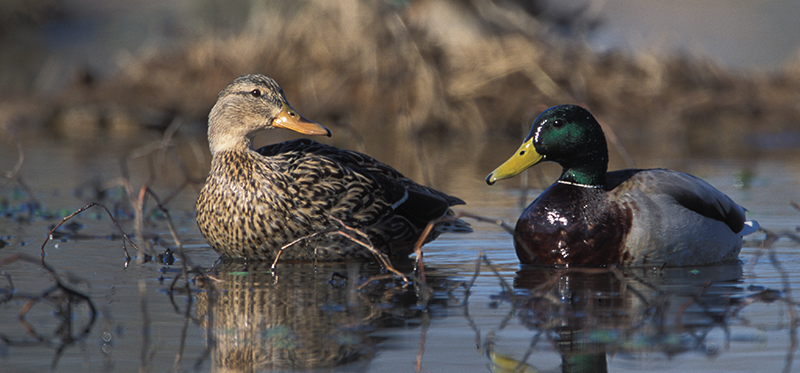Duck populations remain stable overall for 2019-20
8/27/2019 8:31:25 AM
From MDWFP

The U.S. Fish and Wildlife Service and Canadian Wildlife Service, along with other partner organizations, recently completed their annual waterfowl breeding population and habitat surveys in the northern United States and Canadian provinces known as the “waterfowl breeding grounds”. These surveys monitor breeding duck populations and critical wetland habitat conditions, both of which are directly related to the number of birds available to head south toward Mississippi during the upcoming fall and winter. Survey estimates are used to help set duck hunting season frameworks such as bag limits and the number of hunting days allowed. The overall North American total pond estimate, a measure of wetland habitat quantity, declined by five percent from the estimate in 2018, but remained similar to the long-term average. The total breeding duck population estimate for the traditional survey area decreased by five percent from 2018 estimates but remained above the long-term average.
Population estimates for six of the ten surveyed duck species in the traditional survey area decreased this year. However, mallards (+2 percent), green-winged teal (+4 percent), and gadwall (+13 percent) all experienced population increases. Other duck species with reported decreases in their overall numbers were redhead (-27 percent), blue-winged teal (-16 percent), northern shoveler (-13 percent), scaup (-10 percent), and canvasback (-5 percent).
“Specific areas known for producing a large proportion of ducks that migrate to Mississippi reported mixed results for wetland habitat and breeding duck numbers this year” said MDWFP Waterfowl Program Coordinator Houston Havens. “Overall breeding duck populations are still doing very well, and one particularly bright spot for ducks that could potentially end up in Mississippi was the eastern Dakotas survey region. Total duck estimates in this region were up by 29 percent, with northern pintails and mallards showing the largest increases in the region.”
Mississippi hunters are reminded that many factors determine whether large numbers of migrating waterfowl show up to use Mississippi wetlands. Fall and winter weather, as well as wetland habitat conditions here on the wintering grounds, play major roles in where ducks spend the winter.
For more information regarding waterfowl in Mississippi, visit our website at www.mdwfp.com/waterfowl or call us at (601) 432-2199. Follow us on Facebook at www.facebook.com/mdwfp or on Twitter at www.twitter.com/MDWFPonline.









